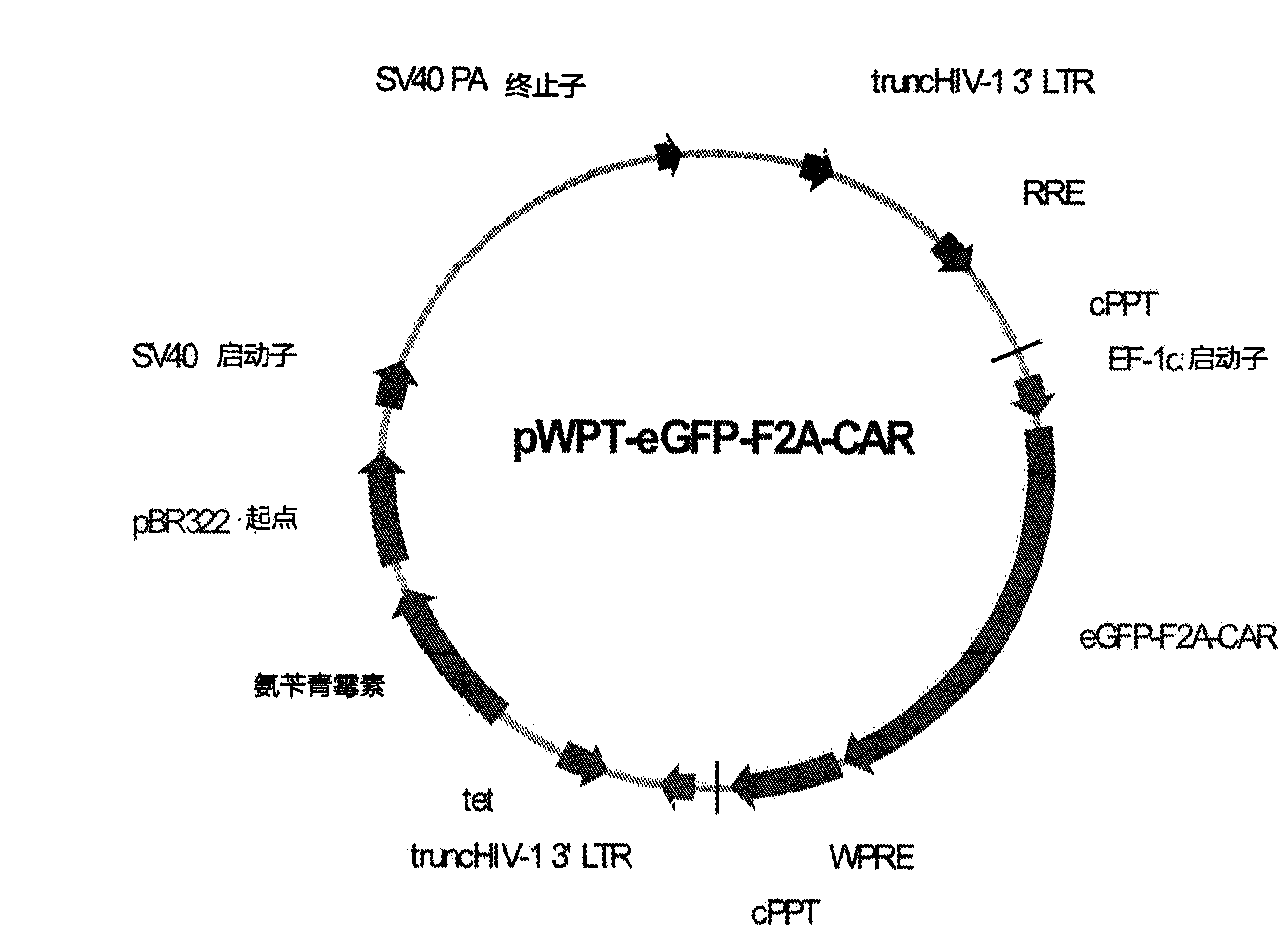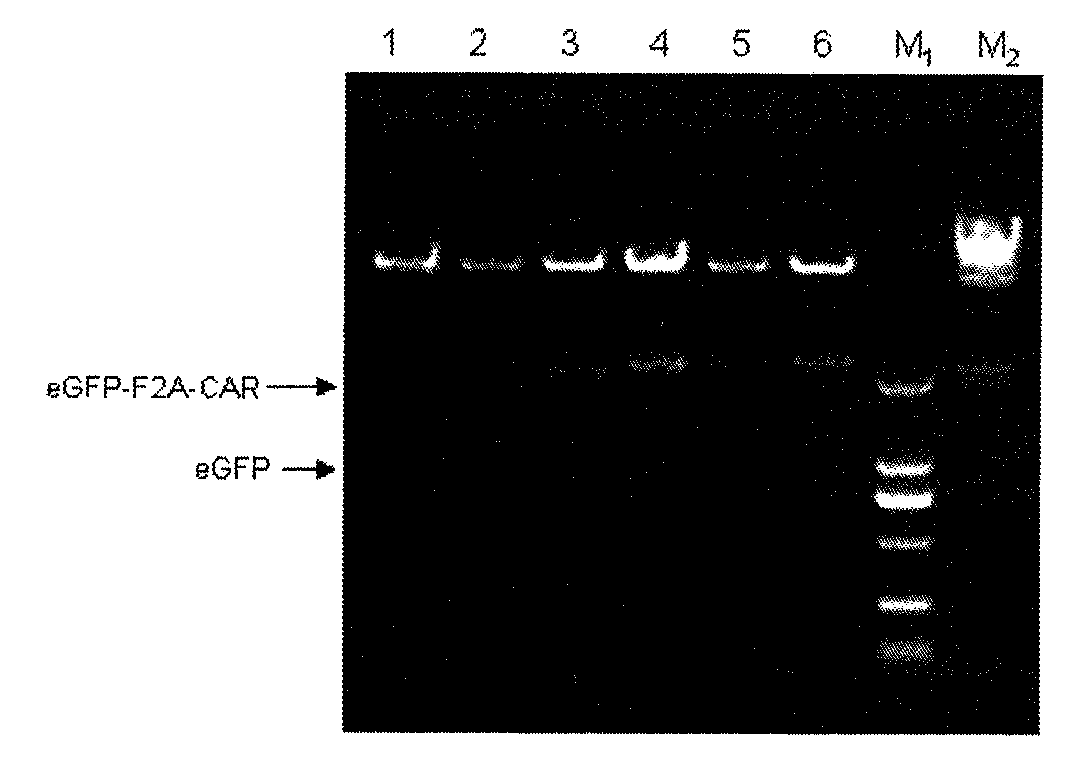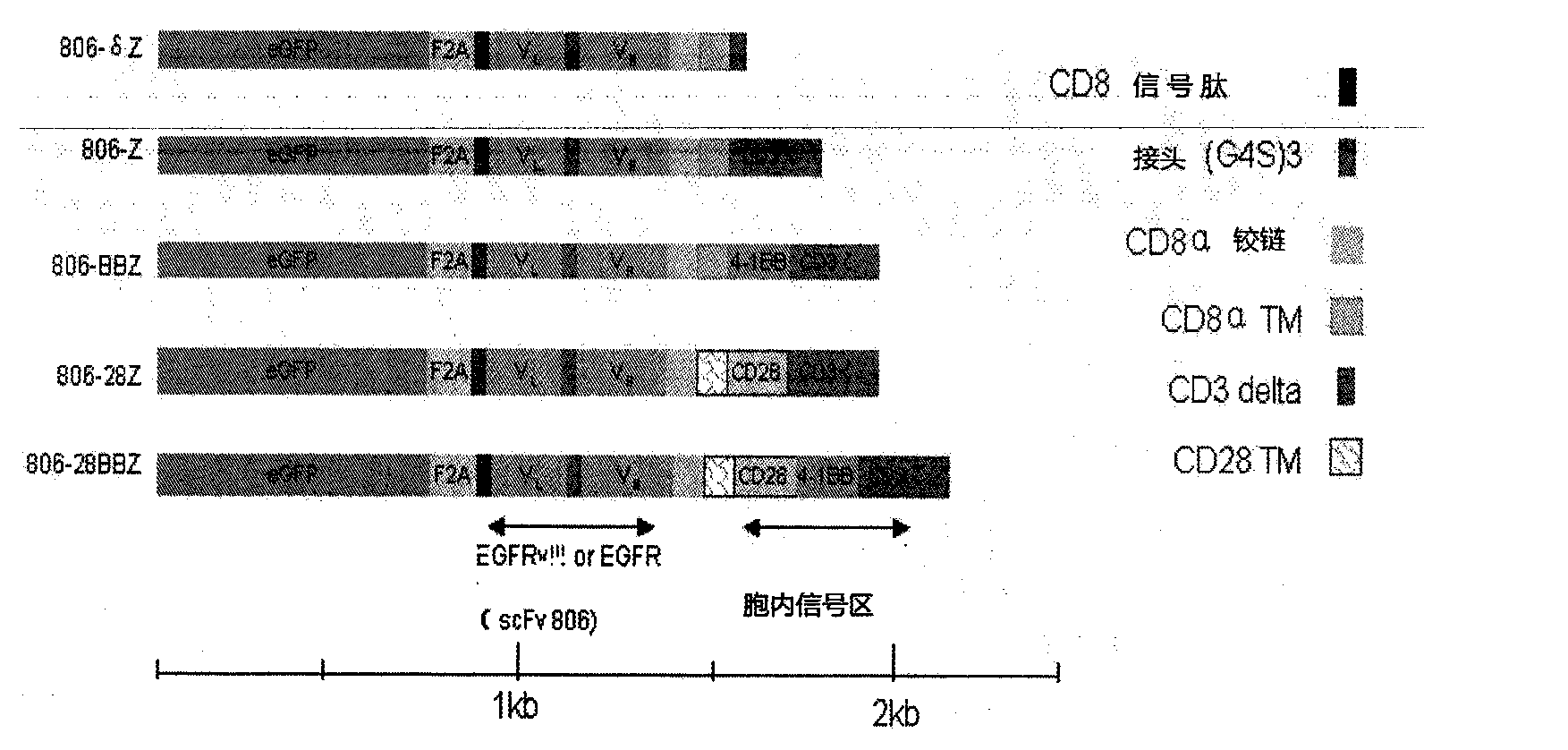Nucleic acid for coding chimeric antigen receptor protein and T lymphocyte for expression of chimeric antigen receptor protein
A technology of chimeric antigen receptors and nucleic acids, applied in the direction of receptors/cell surface antigens/cell surface determinants, genetically modified cells, cells modified by introducing foreign genetic material, etc., can solve tissue damage, off-target cytotoxicity , reducing the activation threshold of effector cells, etc.
- Summary
- Abstract
- Description
- Claims
- Application Information
AI Technical Summary
Problems solved by technology
Method used
Image
Examples
Embodiment 1
[0035] Example 1. Construction of a lentiviral plasmid expressing the chimeric antigen receptor of the present invention
[0036] Table 1 below explains the linkage sequence of the various parts of the exemplary chimeric antigen receptor of the present invention, which linkage can also be found in figure 2 shown in .
[0037] Table 1
[0038] chimeric antigen receptor
Extracellular binding region-transmembrane region-intracellular signal region 1-intracellular signal region 2etc
describe
806-δZ
scFv(EGFR)-CD8-CD3δzeta
806-Z
scFv(EGFR)-CD8-CD3zeta
806-BBZ
scFv(EGFR)-CD8-CD137-CD3zeta
second generation
806-28Z
scFv(EGFR)-CD28-CD28-CD3zeta
second generation
806-28BBZ
scFv(EGFR)-CD28-CD28-CD137-CD3zeta
[0039] 1. Amplification of nucleic acid fragments
[0040] (1) Amplification of scFv (EGFR) sequence
[0041] The amplificati...
Embodiment 2
[0084] Example 2. Recombinant lentivirus infection of CD8 + T lymphocytes
[0085] Human peripheral blood mononuclear cells (provided by Shanghai Blood Center) were obtained from the peripheral blood of healthy people by density gradient centrifugation, and peripheral blood mononuclear cells were passed through CD8 + T lymphocyte magnetic beads (Stem Cell Technologies) negative sorting method to obtain CD8 + T lymphocytes, sorted CD8 + T lymphocytes were detected by flow cytometry CD8 + Purity of T lymphocytes to CD8 + The positive rate of T lymphocytes is ≥95% and it is advisable to proceed to the next step. Take about 1 x 10 6 / mL density was added to Quantum007 lymphocyte culture medium (PAA company) for culture, and the magnetic beads (Invitrogen company) coated with anti-CD3 and CD28 antibodies and the final concentration of 100U / mL Recombinant human IL-2 (Shanghai Huaxin Biotech Co., Ltd.) stimulated culture for 24 hours. Then CD8 was infected with the above recom...
Embodiment 3
[0090] Example 3. Detection of EGFR287-302 epitope exposure in epithelial-derived tumor cell lines
[0091] Exposure of the EGFR287-302 epitope on the surface of several tumor cells of epithelial origin was examined using flow cytometry by a fluorescence-activated cell sorter (FACSCalibur, from Becton Dickinson). Materials used include:
[0092] (1) The monoclonal antibody CH12 that recognizes this site constructed by our laboratory (see Chinese patent CN101602808B for the construction method, Examples 1-4) was used as the primary antibody (final concentration 20 μg / ml, 100 μL / sample),
[0093] (2) FITC-labeled goat anti-human IgG is the secondary antibody (AOGMA Company),
[0094] The specific detection method of epitope exposure is as follows:
[0095] 1. Inoculate each tumor cell in the logarithmic growth phase as listed in Table 3 into a 6 cm plate at a cell density of about 90%, and culture overnight in a 37° C. incubator.
[0096] 2. Use 10mM EDTA to digest the cells,...
PUM
 Login to View More
Login to View More Abstract
Description
Claims
Application Information
 Login to View More
Login to View More - R&D
- Intellectual Property
- Life Sciences
- Materials
- Tech Scout
- Unparalleled Data Quality
- Higher Quality Content
- 60% Fewer Hallucinations
Browse by: Latest US Patents, China's latest patents, Technical Efficacy Thesaurus, Application Domain, Technology Topic, Popular Technical Reports.
© 2025 PatSnap. All rights reserved.Legal|Privacy policy|Modern Slavery Act Transparency Statement|Sitemap|About US| Contact US: help@patsnap.com



